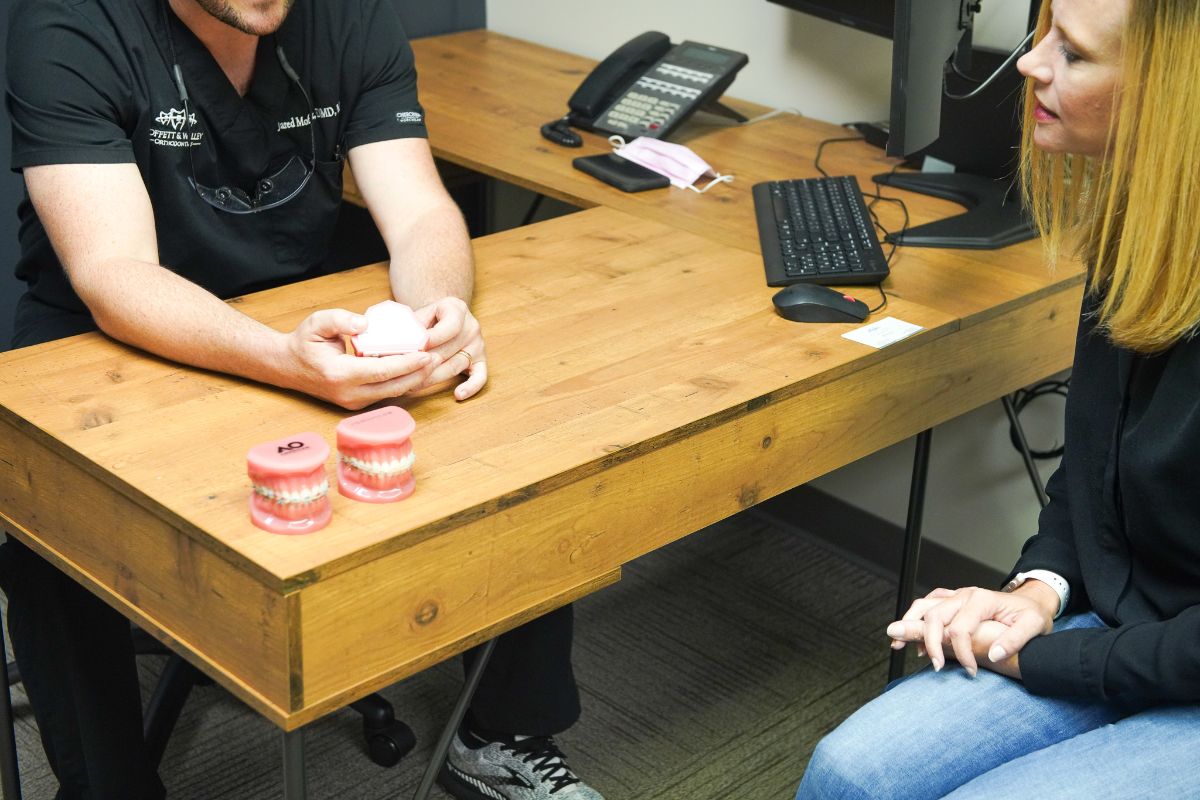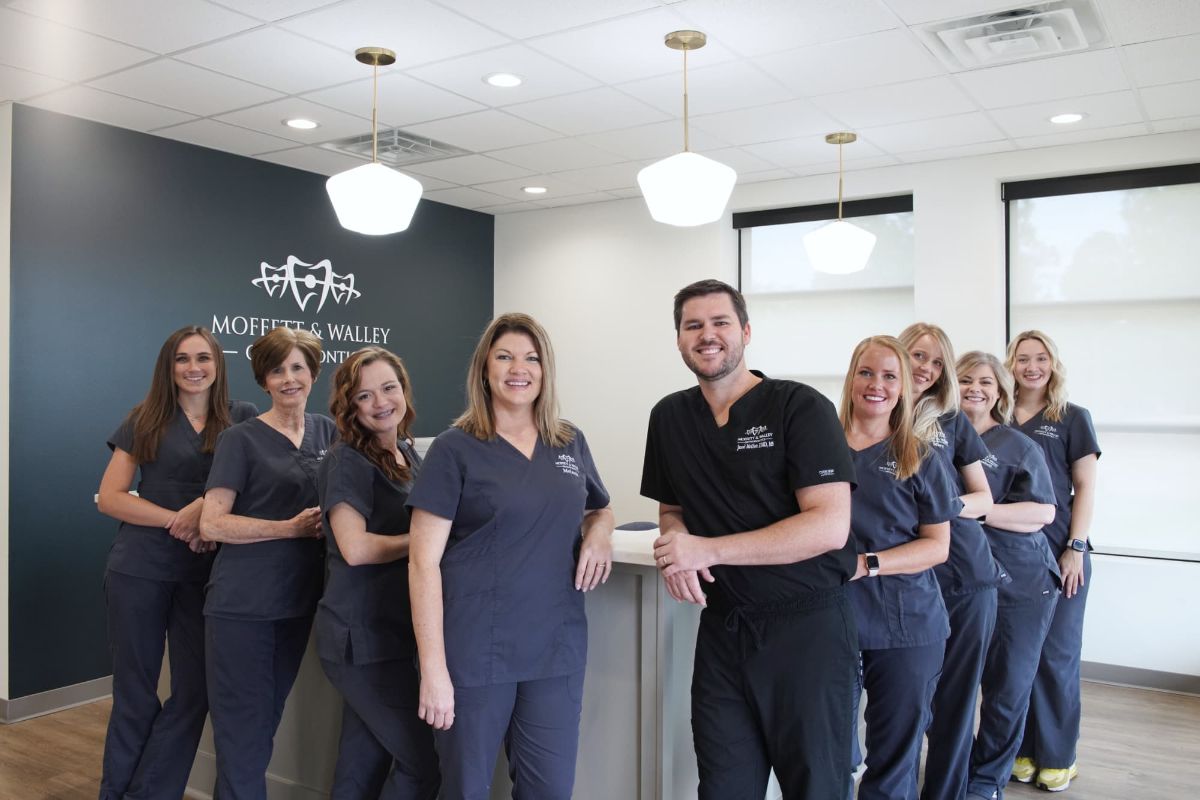When you hear the term “orthodontics,” do you automatically think of braces? You’re not alone! There’s a strong association between the two, so you may be surprised to learn that orthodontics is about more than straightening someone’s smile. It also focuses on cranial and jaw growth. Here at Moffett & Walley Orthodontics, our expert doctor often uses a range of specific appliances to correct jaw alignment. These corrective devices come in many different types, styles, and designs, including traditional braces and Invisalign clear aligners. Another commonly used orthodontic appliance is thepalatal expander. Let’s take a closer look at this important device and how it works!
What is a palatal expander? How does it work?
Have you ever noticed the soft spot a baby has on its head for several months after being born? This allows for further growth of the skull as they get bigger. Children and tweens have a similar soft spot on the roof of their mouths called the mid-palatal suture.During the pre-pubertal stage of development, the right and left sides of a child’s upper jaw are connected by this soft spot. The mid-palatal suture is essentially a growth area that runs right down the middle of our upper jaw, allowing it to widen as a child grows.
Once a child’s growth begins to slow down and end, usually once puberty is complete, this soft spot will fill in with bone and harden. A palatal expander takes advantage of the mid-palatal suture before this occurs and uses it to widen the upper jaw. The appliance is made of two pieces that connect in the middle with a screw. These pieces fit over a few top teeth in the back of a child’s mouth and are activated by turning the screw in tiny increments each day with a special key. How often the screw is turned is based on many factors, but the most common protocol tends to be one turn a day up to a certain maximum number of turns.
Each time the expander is turned, the screw is opened one-quarter of a millimeter. This creates tension at the junction of the two palatal bones, gradually moving them apart. Once the desired amount of expansion is achieved, the appliance will usually be kept in place for a short period so that new bone can form in the gap and stabilize the expansion.

What are the different types of palatal expanders?
If Dr. Moffett recommends a palatal expander for your child, the type used will depend on their age and the unique shape of their palate. We have both fixed and removable options available and will customize their expander to complement the natural shape and size of their palate. Fixed expanders are glued into the mouth, while removable expanders can be removed like a retainer. The most common types of palatal expanders used include the following.
Rapid palatal expander
The rapid palatal expander, or RPE, is standard. It has a center screw with four branches attached to the paralleled back teeth of the upper jaw. You’ll be provided with a small key to activate the center screw each day, turning it based on Dr. Moffett or Dr. Walley’s recommendation. This will widen the palate to the desired size and shape over time.
Removable palatal expander
The removable palatal expander is also common when treating children. This is often used in cases that need only a small amount of expansion. The device resembles a clear retainer but it also contains a center screw. This center screw works similarly to the RPE and requires the same gentle daily expansion for around 3-6 months.
Mini-implant assisted rapid palatal expander
Children who begin treatment early enough are unlikely to need a mini-implant assisted rapid palatal expander (MARPE), but they can be very helpful for older teens and young adults who require more powerful pressure to reshape their palate.
A MARPE includes two to four mini-implants placed on parallel points of the palatal bones. There is also a center screw that works similarly to other palatal expanders, but instead of applying pressure to the teeth, it applies pressure directly to the palatal bones.
Who can benefit from palatal expanders?
The American Association of Orthodontics recommends all children see an orthodontist by the age of 7. When it comes to expanders, this allows us to take advantage of a young child’s growth potential to get the best result we can! When you schedule your child for their first orthodontic visit, Dr. Moffett will assess their smile and examine how the upper and lower jaws line up with each other. If the upper jaw looks to be narrow and in need of expansion, they’ll be able to diagnose this at an early age. Palatal expanders are most often used between the ages of 7-14. They can benefit children in this age range by:
- reducing or eliminating overcrowding—expanders create space for all of a child’s upper teeth to erupt in the correct positions
- reducing the risk of developing impacted teeth—when other teeth block an unerupted tooth, we can create room for it to emerge by widening the upper jaw.
- correcting a crossbite—the upper teeth should be able to close around the outside of the lower teeth, but a narrow palate can cause the upper teeth to bite inside the lower teeth. An expander can correct this before serious asymmetrical jaw growth occurs, restoring facial symmetry.
Expanding the upper jaw with a palatal expander can also improve the aesthetic appearance of their smile, limit the need for tooth extraction, and reduce the total treatment time if a child is fitted for braces or clear aligners later on.

Help your child’s smile grow with Moffett & Walley Orthodontics
As the saying goes, timing is everything. That’s especially true when it comes to palatal expanders! This useful appliance works best if we can widen a child’s top jaw before the soft spot on the roof of the mouth fills in with bone. Once this occurs, surgery is the only option for widening the upper jaw. Since solidification of the top jaw usually happens during puberty, we prefer to begin this treatment between the ages of 7-14 or so. If your child is ready for their first orthodontic visit, we’d love to meet you both and see how their smile is developing! Get in touch today to schedule a FREE consultation with our Clinton or Madison office.
